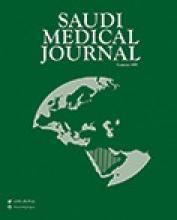Abstract
OBJECTIVE: To investigate the tissue injury associated with long-term alcohol consumption in male gonads. To this end, apoptotic testicle tissues of alcoholic rats were compared with the testicle tissues of the control rats.
METHODS: This study was conducted in the Department of Anatomy and Division of Pathology, Faculty of Medicine, Kocaeli University, Kocaeli, Turkey during the period 2002 to 2003. We used Sprague-Dawley rats as the subject material in the investigation of apoptosis. We divided the rats into 2 groups: alcoholic rats and the control group, with 10 adult male rats in each group. We housed the subjects in each group under controlled temperature (22 ± 3 degrees celcius) and humidity (62 ± 7%) and lighting (12 hours darkness and 12 hours daylight per day). We fed the rats in the alcoholic group by ethanol in liquid diet for 12 weeks while the control rats received the normal isocaloric diet. We fixed the testicle tissues of both groups by perfusion of 10% formaldehyde through left ventricle and then removed. We further fixed the tissues in formaldehyde solution for at least 2 days. After dehydration by ethanol, we embedded the tissue in paraffin and used serial paraffin sections (5 u thickness) for immunohistochemistry. We used Caspase-3 Ab-4 (CPP32) antibody to identify caspase reaction in apoptotic regions. Hence, we observed the stained sections and photographed the apoptotic seminiferous tubules (ST). For comparison of apoptosis in the alcoholic group and control group, we counted the apoptotic germ cells in x 400 magnification under light microscope.
RESULTS: The diameters of seminiferous tubules were measured using light microscope with micrometre. The findings were compared by computer and significant differences in apoptosis between 2 groups (p<0.01) were detected.
CONCLUSION: Apoptosis is significantly induced in ethanol treated rat related to the overuse of ethanol. The findings indicate the tissue injury of testicles associated with alcohol consumption.
- Copyright: © Saudi Medical Journal
This is an open-access article distributed under the terms of the Creative Commons Attribution-Noncommercial-Share Alike 3.0 Unported, which permits unrestricted use, distribution, and reproduction in any medium, provided the original work is properly cited.






